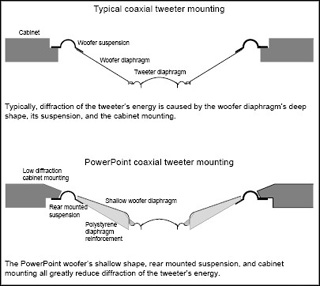Introduction
Founded in 1977, Thiel Audio designs and manufactures speakers and
subwoofers for home audio applications. Industry legend and co-founder Jim Thiel is responsible for the variety of technological advancements in driver
design, crossovers, and acoustical construction techniques found throughout
Thiel’s award winning line-up. Jim’s academic background in physics and
mathematics is clearly embodied in his design principles of time and phase
accuracy, achieved through the use of sloped baffles, coaxial driver
mounting, and phase coherent crossover network design.
By the early 80’s, Thiel speakers had found their way into many high-end
audio salons and boutiques across the country, and were quickly embraced by
discriminating audiophiles. My own experience over the last two decades with Thiel
speakers has been one of remarkable consistency – they are all
unflinchingly accurate, but are also unforgiving of poor source material and
substandard upstream equipment. When fed high quality source material
through decent gear, Thiels will reward the listener with a
coherent soundstage, fantastic imaging, and exceptional sonic accuracy.
Read on to learn how the new PowerPoint 1.2 (PP1.2) loudspeakers remain
faithful to the Thiel legacy, while at the same time setting new standards
of fidelity and accuracy for wall mount speakers.
The Design
The PP1.2 is designed primarily for 5.1 or 6.1 home theater applications
where discrete speaker mounting on the upper walls and ceilings is desired.
The aluminum speaker housing is smooth-contoured and wedge-shaped, with a
flat back side and recessed input cup. The coincident woofer/tweeter driver
is mounted at a 450 angle from the mounting surface. There are two
mounting tabs at the top and bottom of the housing.
Dimensions are about 21" long, 12" wide, and 6.5" tall. Weight is
approximately 16 pounds, and the enclosure feels substantial. The stock
color is white, but the housing can be painted to match any décor. An
expanded metal grille protects the speakers, and is held in place by the
magnetic forces of the woofer magnet, cleverly eliminating the need for pins
and grommets. At first I was worried that the metal grille might color the
sound, but I could not detect (nor could I measure) a difference in sound
quality with the grille removed.
The PP1.2 is probably best suited for new-build installations, where the
speaker wiring can be run as part of the room construction. However, post
construction installation is certainly possible, and a competent electrician
or HT installer should be able to fish the speaker wires.
Since this speaker weighs 10 pounds, I would strongly recommend anchoring
the PP1.2 to a wooden mounting plate which is attached between two wall studs.
This would provide a very secure connection, and allow for the speaker wire
to be fished to the input cup between the wall studs. As a less desirable
alternative, the user could mount the PP1.2 only to the drywall, but metal
locking anchors that open and expand behind the drywall would be mandatory,
as the PP1.2 in my opinion is too heavy to mount with plastic drywall
anchors.
Shown below is a typical left, center, and right speaker channel mounting
arrangement for the PowerPoint 1.2.

The PP1.2 was designed to significantly exceed the performance of other
on-wall and in-wall designs. As discussed in detail in their white
paper, a few of the more salient design highlights are summarized below.
Time Coherent Topology
The PP1.2 utilizes a coincident mid-bass woofer and tweeter mounted in the
same axial plane. This ensures that the outputs from both drivers arrive at
the listener’s ears at the same time, and eliminates the horizontal off-axis lobing and comb filtering typically encountered in more conventional speaker
mounting arrays.
filtering typically encountered in more conventional speaker
mounting arrays.
Custom Tweeter and Woofer Mounting
In conventional coincident woofer/tweeter designs, output from the deeply
recessed tweeter will be diffracted and reflected by the woofer cone, its
forward mounted surround, and the cabinet edges. In comparison, the PP1.2
design uses a very shallow tweeter recess and a unique woofer cone profile
which acts as a flared baffle to minimize tweeter diffractions. In
addition, the PP1.2 woofer surround is rear mounted, and the cabinet edges
are chamfered to further reduce the potential for tweeter diffraction.
Click Here to Go to
Part II.